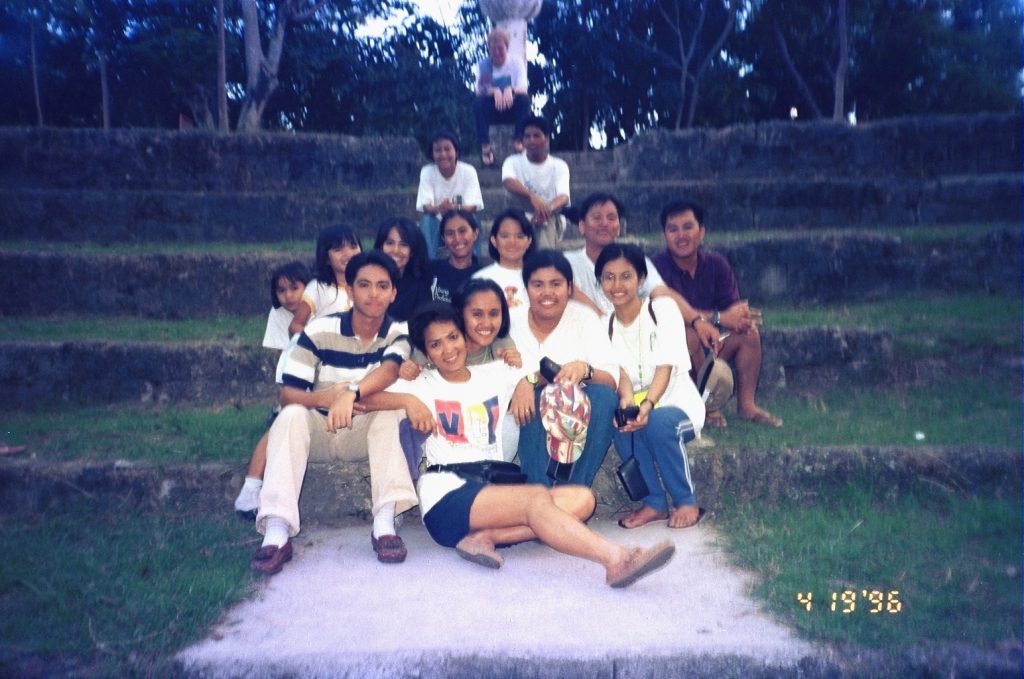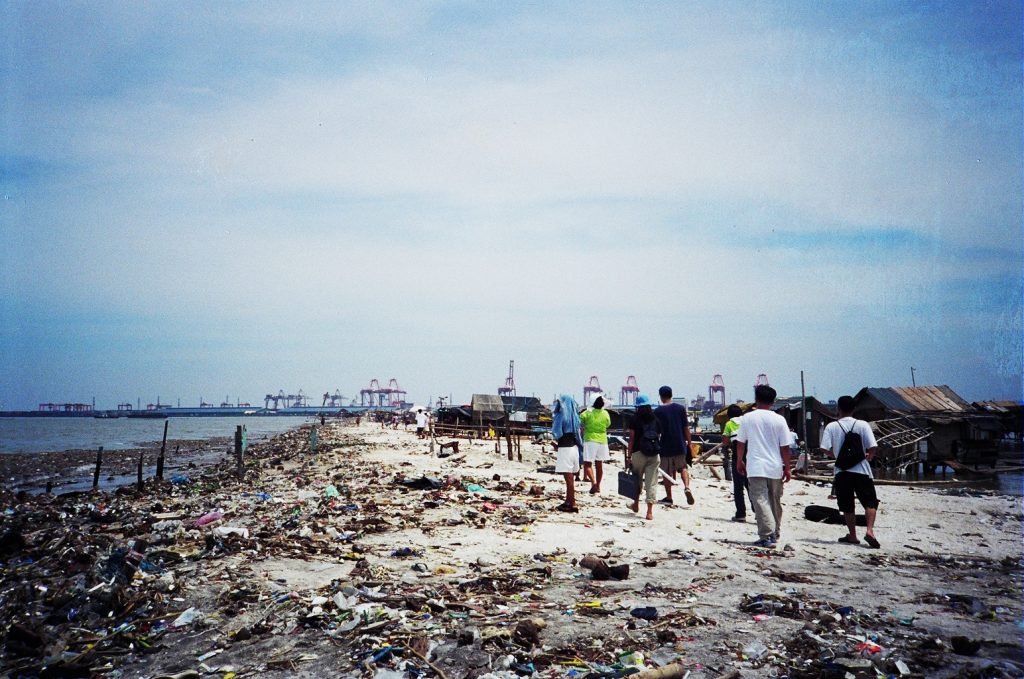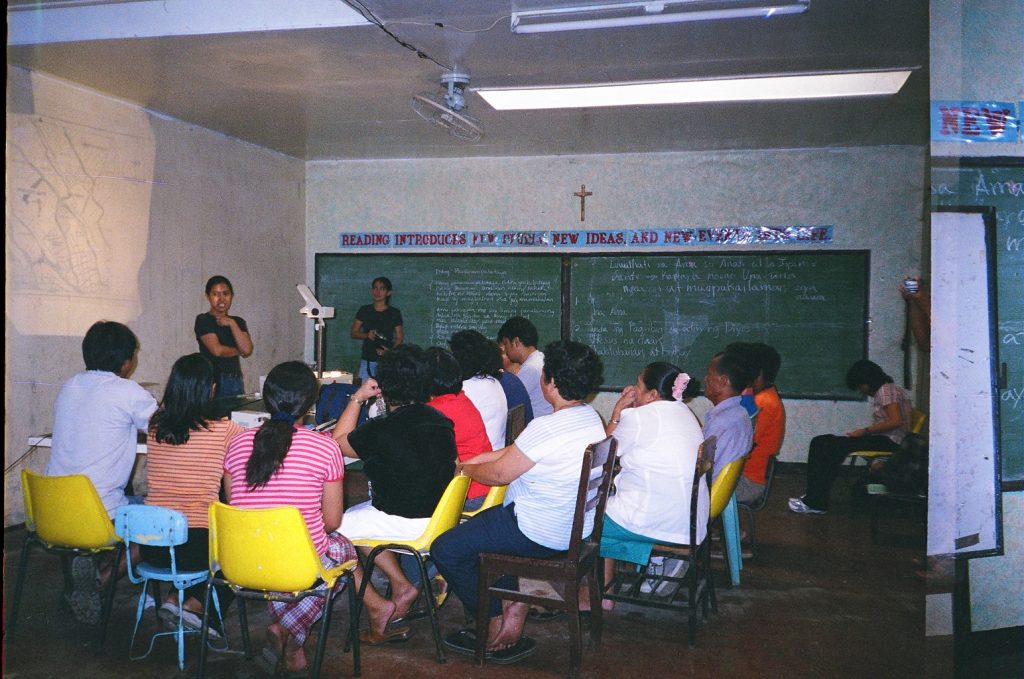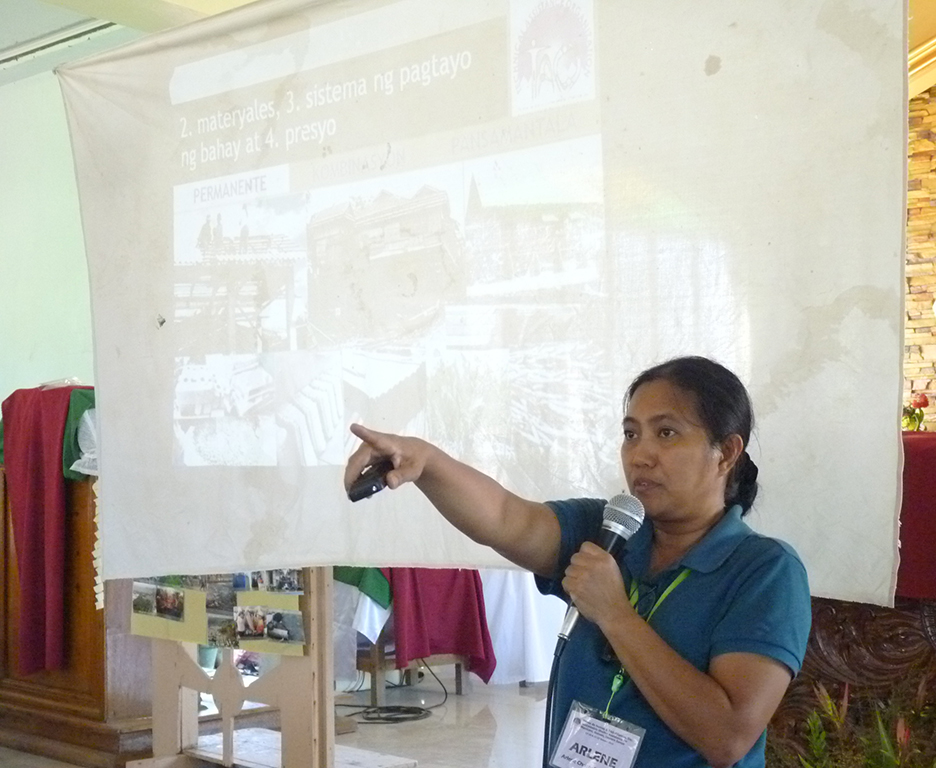TAO-Pilipinas, Inc.
"It is time for us to go to the people rather than ask the people, especially the poor, to come to us."

TAO-Pilipinas was started by architects Arlene Lusterio and Faith Varona who wanted to have a more socially responsive professional practice. This pursuit of architecture careers immersed in working with poor communities took root from their initial exposure as members of the socio-civic student organization Task Force Arki (TFA) at the University of the Philippines in Diliman. In 1996, they organized the first national summer camp on social housing in Cebu City, initiating the formation of a loose coalition of young professionals involved in community development work. Faith and Arlene eventually formed TAO-Pilipinas as an NGO in 2001 with the support of Fr. Eduardo Jorge Anzorena of SELAVIP. They were joined by like-minded women professionals as board members of the new NGO.

TAO-Pilipinas’ first official involvement was with informal settlements affected by the Pasig River Rehabilitation Program in Metro Manila, in partnership with the Urban Poor Associates. The first communities that TAO worked with to formulate community development plans or People’s Plans were in Baseco and Parola in the port area of Manila and Barangay Pineda in Pasig City. Other groups along Pasig River and in other areas in Metro Manila followed suit and TAO was soon working with communities in Quezon City, Valenzuela City, West Rembo in Makati City, Punta Sta. Ana and Tondo in Manila, Tanza in Navotas City, and in Marilao, Bulacan. TAO employed a strong participatory approach in its technical assistance work which was mostly centered on advocacy for secure tenure and housing, and on community development.

In 2004, with Misereor providing institutional funding support, four major programs were set up and run to achieve TAO’s goals. Its core program, the Human Settlements and Environment, provided direct technical assistance to community-based organizations and NGOs. Supporting it were the Research and Publications program which covered various studies and documentation activities, as well as the maintenance of its resource center; the Education and Training with the Young Professionals program which focused on the provision of capability-building workshops and trainings; and the Organization, Networking and Advocacy program which dealt with network and organizational development.
In a decade, TAO has grown to a 10-strong all-women staff and reached more informal settlements in and outside of Metro Manila and parts of Luzon, worked with more NGOs, collaborated with local governments and key shelter agencies, and widened its local and international academe network. By 2012, TAO-Pilipinas’ work increasingly geared towards shelter assistance in post-disaster response and began undertaking its first few major construction projects. The following years also saw TAO’s project areas expand to the Visayas and Mindanao region with capability-building activities in the Palawan, Northern Samar and Cagayan de Oro City.

In the aftermath of super typhoon Yolanda in 2013, TAO-Pilipinas worked with various NGOs, international NGOs, local government units and people’s organizations in numerous post-disaster rehabilitation and reconstruction efforts in Leyte, Iloilo, Panay and Eastern Samar. For close to four years, TAO implemented the shelter and evacuation center component of PMPI Project Pagbangon in Manicani and Homonhon Islands in Guiuan, Eastern Samar.
At present, TAO has received another three-year grant from Misereor, its major funding partner since 2004, for a continuing project on building sustainable and disaster-resilient communities in Luzon. TAO also has recently undergone organizational restructuring to more efficiently provide the expanding range of technical services offered to its target groups while continuing to give a strong focus on the application of participatory approach in its planning and design works.